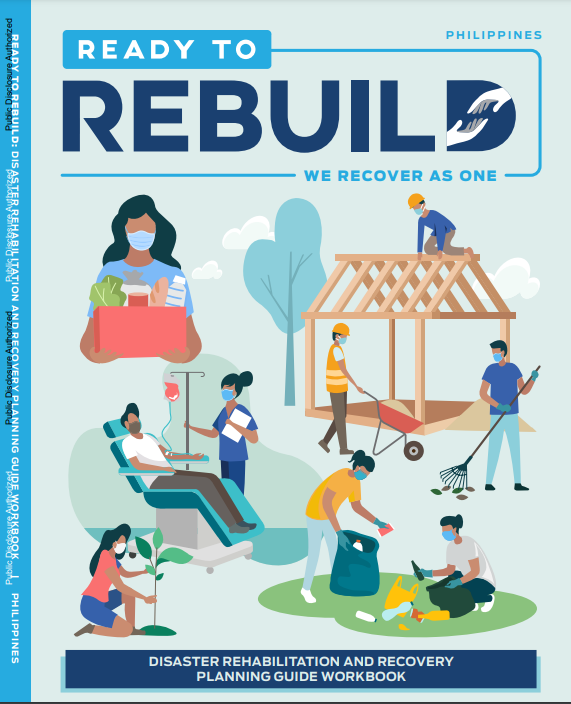The aim of building resiliency is to prepare communities to resist, absorb, recover, and transform from the consequences of current and foreseen hazards and events. Rehabilitation and recovery plays a very important role in this preparation as (i) it can address the longer-term needs and challenges that makes a community vulnerable; and (ii) it provides the opportunity to increase the capacity of the society to cope and reduce the risk of future emergencies and disasters. Informed by the lessons learned from previous disasters, locally and globally, the National Disaster Risk Reduction and Management Council (NDRRRMC) approved the Philippine Disaster Rehabilitation and Rehabilitation Planning Guide on March 2019. The Planning Guide provides the rehabilitation and recovery framework, the rehabilitation planning process and plan structure, institutional arrangements for plan coordination, implementation mechanisms, and proposed monitoring and evaluation arrangements. This will guide the National Government Agencies (NGAs) and Local Government Units (LGUs) in the crafting and implementation of rehabilitation and recovery programs. This workbook is developed as a supplementary document to the Disaster Rehabilitation and Recovery Planning Guide developed by the National Economic and Development Authority (NEDA). It doubles as the reference material with key concepts in disaster rehabilitation and recovery, and worksheets that should be accomplished by the Local Government Units (LGUs) for each part. The workbook follows the Planning Guide’s five parts: Part 1 Disaster Rehabilitation and Recovery Framework; Part 2 Rehabilitation Planning Process and Plan Structure; Part 3 Institutional Arrangements; Part 4 Implementation Mechanisms; and Part 5 Monitoring and Evaluation.
Ready to Rebuild: Disaster Rehabilitation and Recovery Planning Guide Workbook
January 20, 2022 Read this publication

